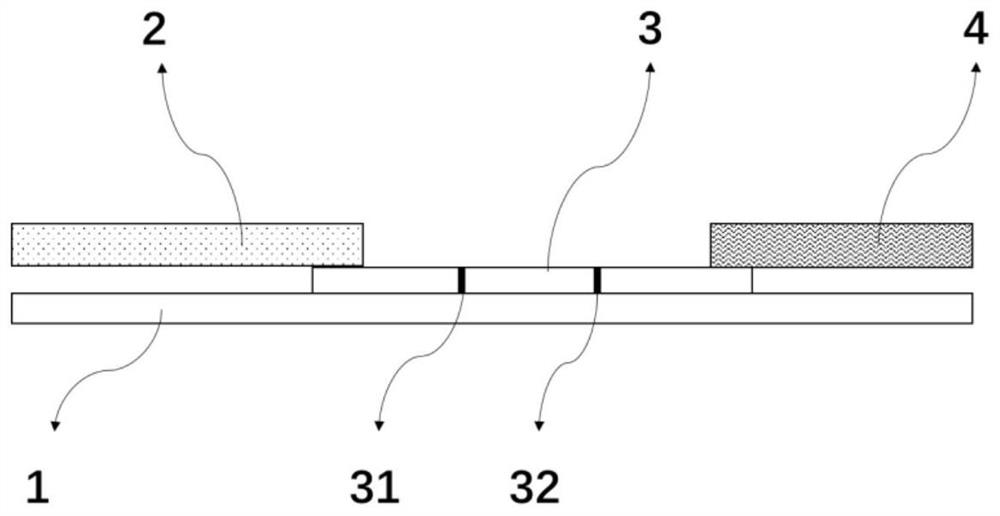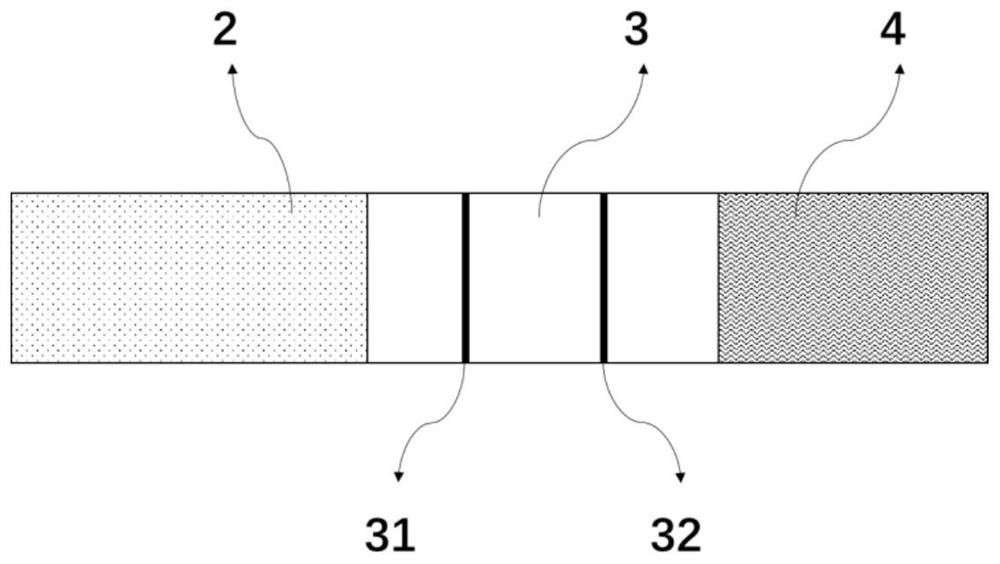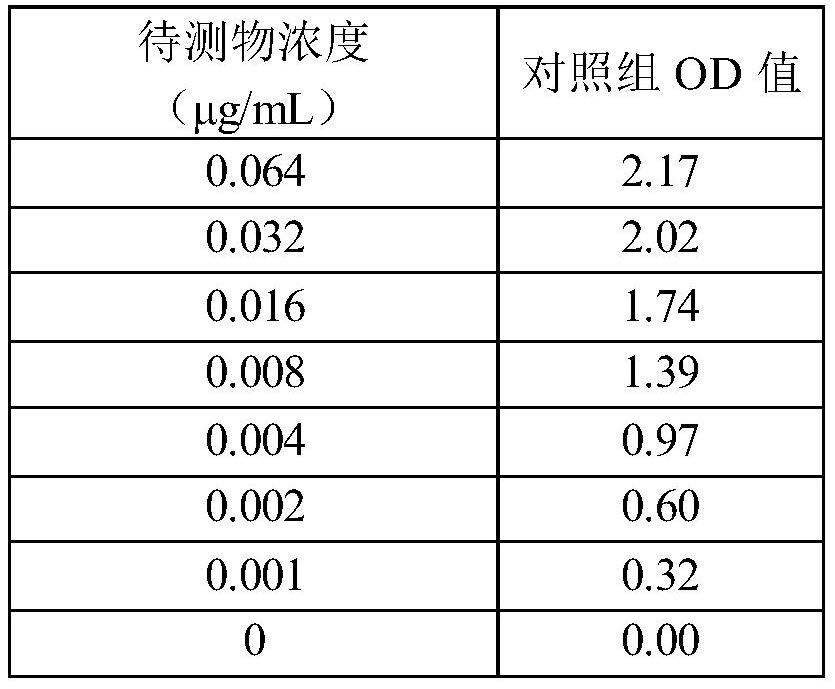Kit for detecting coupling efficiency of target antibody and microspheres as well as method and application thereof
A technology for coupling efficiency and target detection, applied in biological testing, measuring devices, material inspection products, etc., can solve the problems of long time consumption, low detection sensitivity of protein detection, cumbersome operation, etc.
- Summary
- Abstract
- Description
- Claims
- Application Information
AI Technical Summary
Problems solved by technology
Method used
Image
Examples
Embodiment 1
[0040] A method for detecting the coupling efficiency of a target antibody and microspheres, comprising the following steps.
[0041] (1) Preparation of Immunolateral Flow Chromatography Reagent Tablets
[0042] Preparation of nitrocellulose membrane:
[0043] Preparation of T-line (detection line 31) drawing solution: dilute a goat anti-mouse IgG (detection line antibody) to 0.5mg / mL with pH 7.3, 0.01M PBS diluent, and set aside at 2-8°C;
[0044] Preparation of line C (quality control line 32) drawing solution: dilute any mouse monoclonal antibody (quality control line antibody) to 2 mg / mL with pH 7.3, 0.01M PBS diluent, and store at 2-8°C for later use.
[0045] Scribe the T-line and C-line scribing fluids on the nitrocellulose membrane (NC membrane) with a scribing and gold-spraying instrument, and then dry the NC membrane for 2 hours in a vacuum to obtain a test line 31 and a quality control line. 32 nitrocellulose membrane.
[0046] (2) Detection of antibody-coupled m...
Embodiment 2
[0053] A method for detecting the coupling efficiency of antibodies and microspheres, roughly the same as in Example 1, the difference mainly lies in the difference between the detection line antibody, the quality control line antibody and the target antibody, the differences are as follows:
[0054] The T line is coated with an antigen (D-Dimer, in other embodiments, it can also be antigens such as SAA and CRP), and the C line is coated with any mouse monoclonal antibody to detect a mouse monoclonal antibody (D-Dimer). Dimer mouse monoclonal antibody, in other embodiments, can be SAA, CRP and other mouse monoclonal antibodies) labeling efficiency on fluorescent microspheres.
[0055] Preparation of T-line drawing solution: Dilute an antigen (such as D-Dimer, SAA, CRP and other antigens) to 0.5 mg / mL with pH 7.3, 0.01M PBS diluent, and store it at 2-8°C for later use.
Embodiment 3
[0057] A method for detecting the coupling efficiency of antibodies and microspheres is roughly the same as in Example 1, with the differences as follows:
[0058] Preparation of T-line drawing solution: dilute a goat anti-mouse IgG (detection line antibody) to 1, 0.75 or 0.5mg / mL with pH 7.3, 0.01M PBS diluent, and set aside at 2-8°C;
[0059] Preparation of C-line marking solution: dilute any mouse monoclonal antibody (quality control line antibody) to 4, 3 or 2 mg / mL with pH 7.3, 0.01M PBS diluent, and store at 2-8°C for later use.
PUM
 Login to View More
Login to View More Abstract
Description
Claims
Application Information
 Login to View More
Login to View More - R&D
- Intellectual Property
- Life Sciences
- Materials
- Tech Scout
- Unparalleled Data Quality
- Higher Quality Content
- 60% Fewer Hallucinations
Browse by: Latest US Patents, China's latest patents, Technical Efficacy Thesaurus, Application Domain, Technology Topic, Popular Technical Reports.
© 2025 PatSnap. All rights reserved.Legal|Privacy policy|Modern Slavery Act Transparency Statement|Sitemap|About US| Contact US: help@patsnap.com



